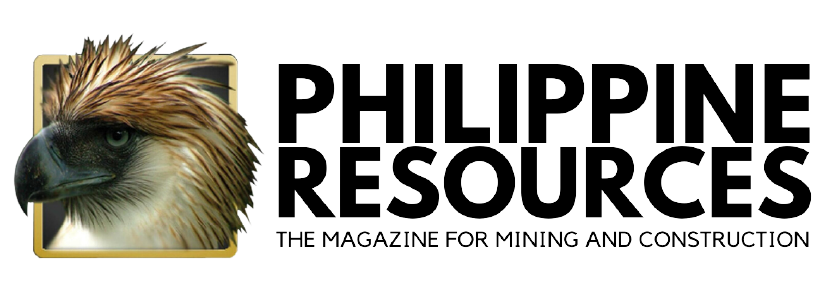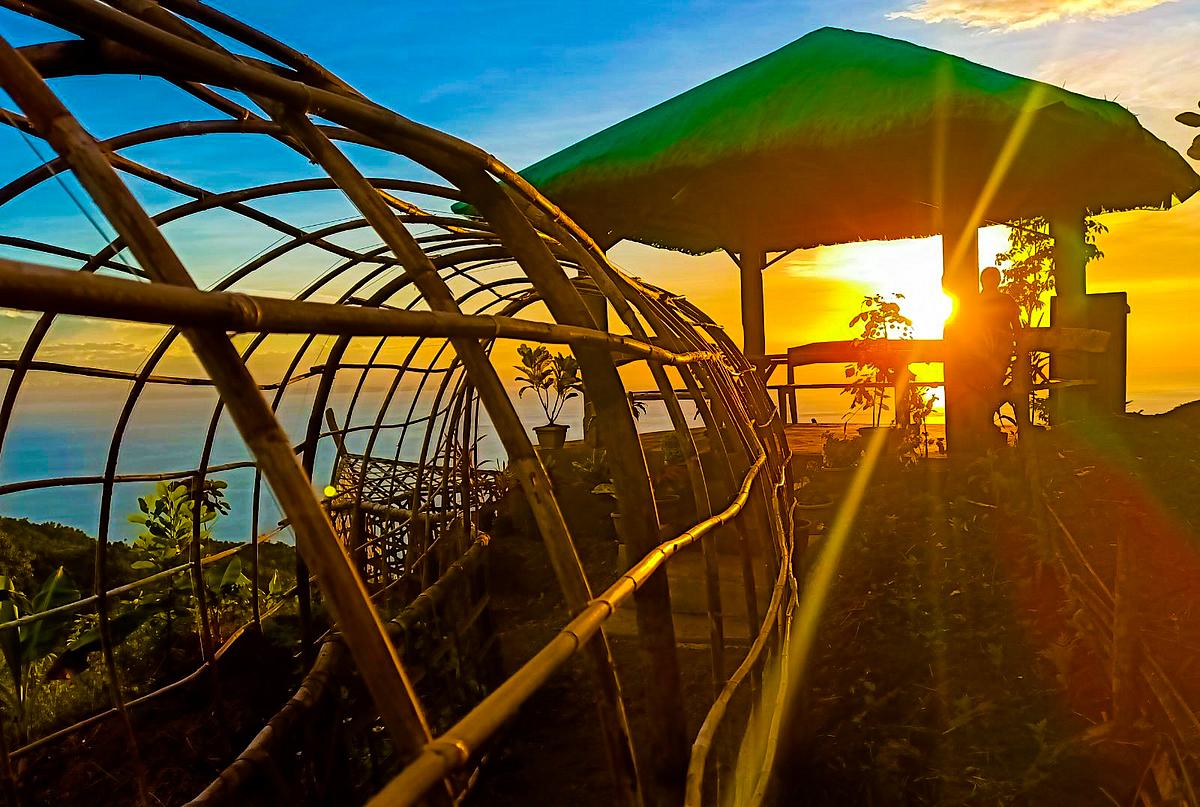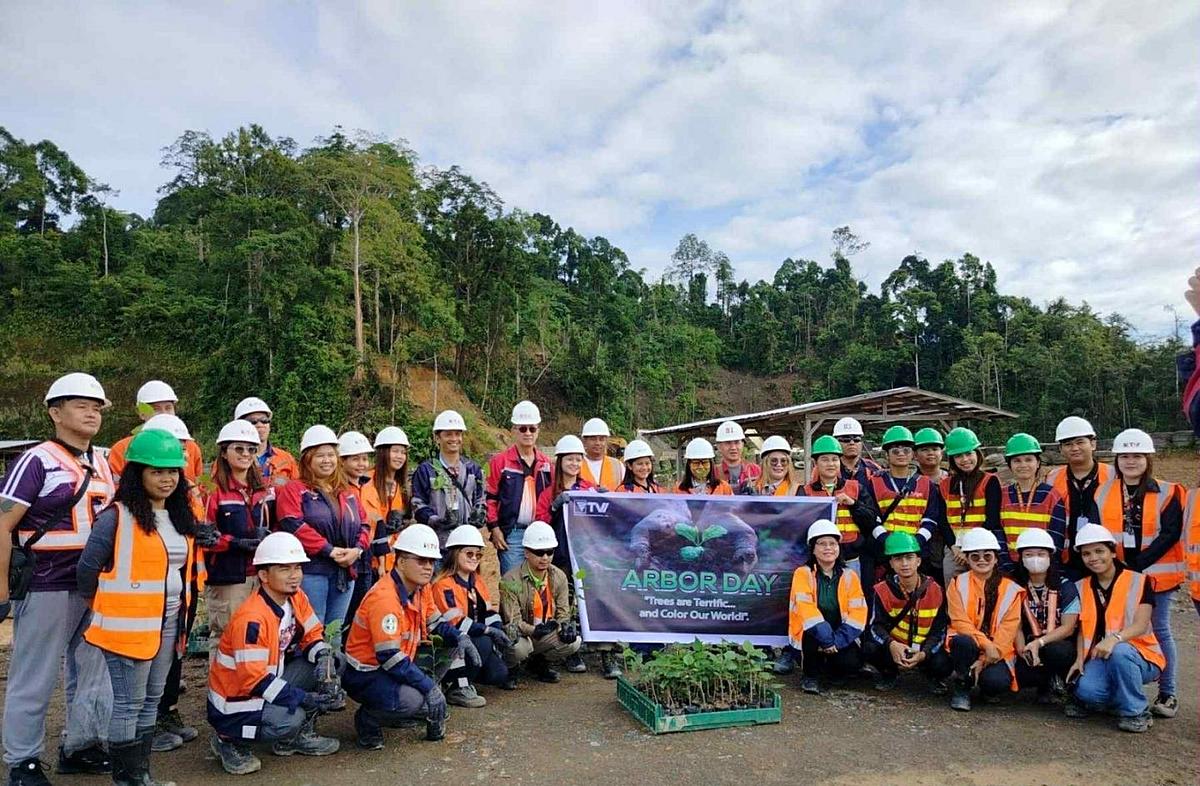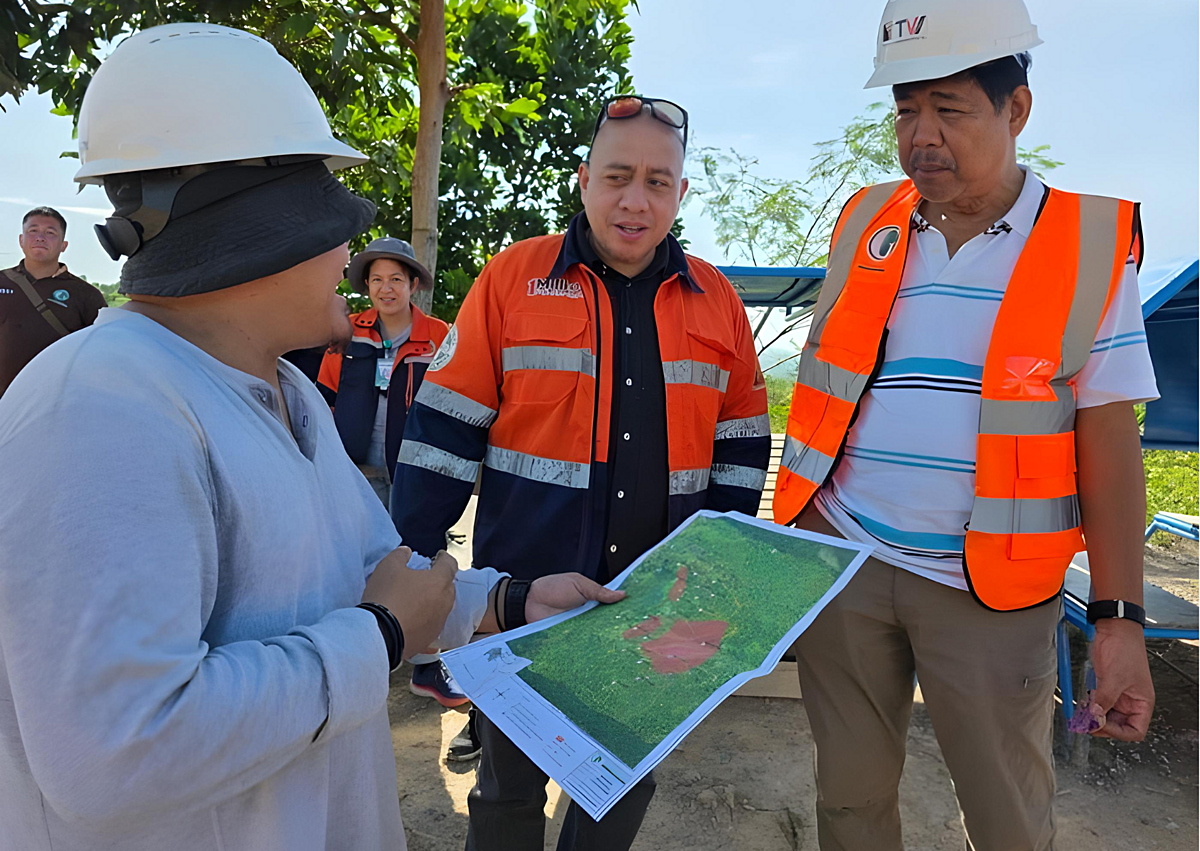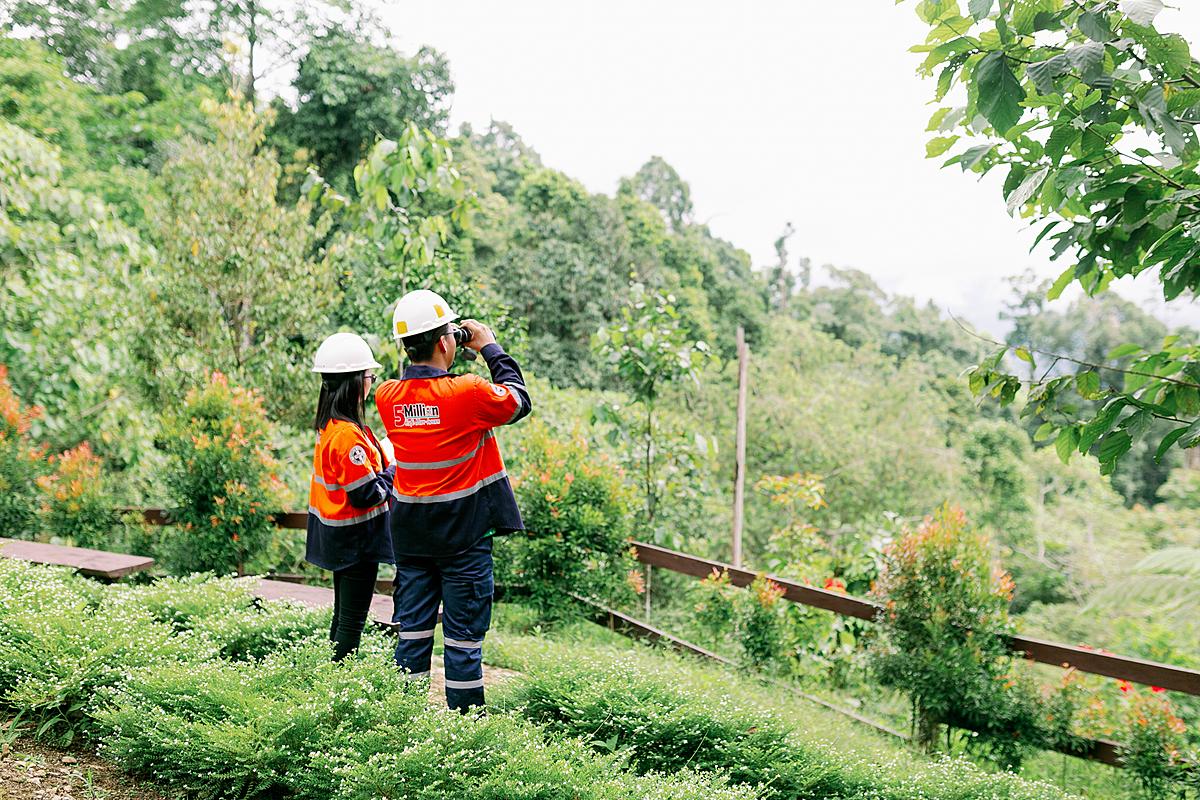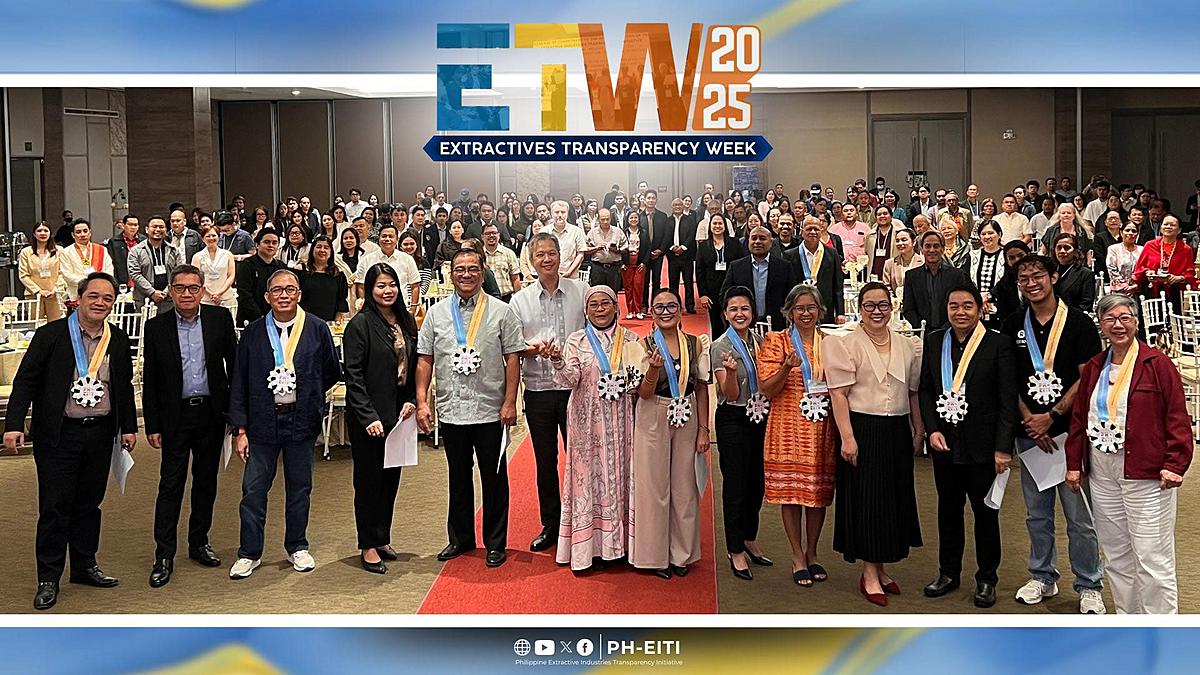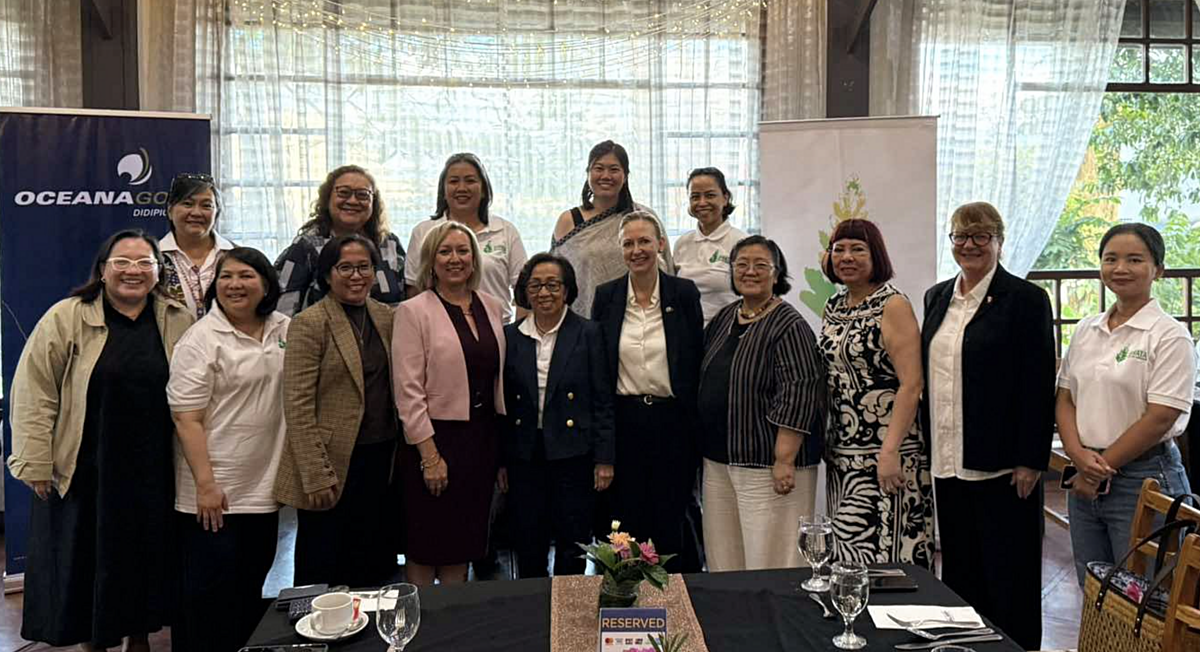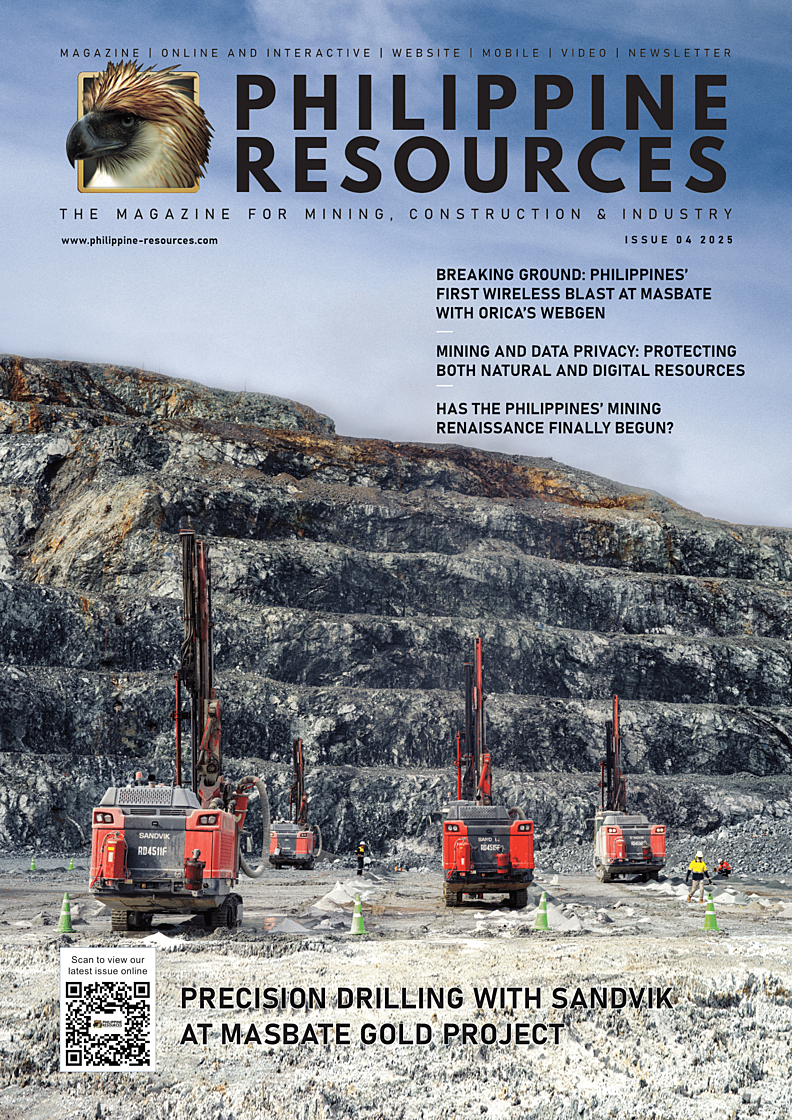Photo: A close-up on life after mining. Agata’s Bae Lawanen Garden features breath-taking and photogenic sunsets every day from its newly installed view deck that is shaped like a marine vessel.
Agata continues to implement effective and sustainable rehabilitation programs that highlight its “Mining and Ecotourism” concept through the successful conversion of its mined-out areas into eco-tourism sites.
Agata may not be the biggest nickel project in the country. But whatever it lacks in size is compensated through innovations, environmental programs, and socio-cultural projects replicated by other companies.
Reforestation and rehabilitation
Agata designed its rehabilitation programs to give equal importance to replanting mined-out areas and protecting existing forests to conserve its natural environment. The balance between production and protection is essential in sustaining the community’s livelihood and protecting local resources.
Since 2020, Agata has planted about 423,807 seedlings of forest and fruit-bearing trees as well as endemic plant species. Since the time it commenced exploration, Agata’s reforestation activities have covered a total area of over 440 hectares. The careful selection of trees and plants was curated by the company as a means to ensure the community’s livelihood at the end of Agata’s mine life.
Nurseries were constructed to house and propagate endemic and bird-feeding tree species as part of the company’s Land Resource Management Program to increase the productivity of mined-out areas. Its Ligaya Central Nursery has a capacity of 600,000 seedlings, while its satellite nursery has a capacity of 25,000 seedlings and is maintained by its partner community, the Lawigan Farmers and Fisher-folks Association (LAFFA).
Agata also planted some 2,948 Giant Bamboo trees (Kawayan Kiling species) across seven hectares as part of its final rehabilitation and reforestation. Agata Forester Jesnar Villareal said that bamboo absorbs more carbon dioxide than trees, generates a vast amount of oxygen, and can strongly root itself in the ground – which makes the soil more stable.
Thematic landscapes
Achieving a sustainable environment after mining is the focus of Agata’s vision for the future. It was the first mining company to adapt thematic landscaping, which is a method of land use management where rehabilitation or revegetation is designed to beautify the area.
These “Instagrammable” landscapes also showcase the company’s best practices on solid waste management as the ornaments used are made from recycled materials. One such photo hotspot is the Bae Lawanen Garden found within the admin camp, which has been frequented by visitors prior to the pandemic.
Green innovations
Agata produces its own organic soil fertilizers by using livestock wastes from the company’s own Mabakas Techno Demo Farm. These organic fertilizers – mixed with kitchen food waste from the company’s mess hall – are recognized as a “soil builder” because of its property to improve soil quality. Agata also trained local farmers on the production of the organic fertilizers for their own use.
In addition, the company implements a strong solid waste recycling program that has reprocessed 60% of all collected solid wastes this year alone. It also created its own rain-fed irrigation system using plastic water bottles as rain catchment and storage, to keep a steady supply of water for its growing plants and trees.
These environmental projects not only reduce the company’s carbon footprint but also help in its reduction of ecological waste.
With the collective support across its ranks and host barangays, Agata cultivates a better and healthier environment for its communities; an enduring testament that – beyond a doubt – there is life after mining.
